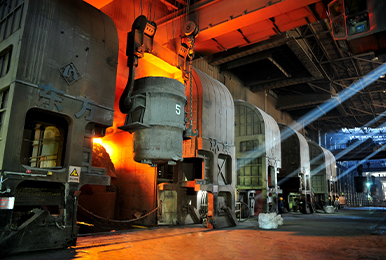Dec . 04, 2024 01:43 Back to list
copper graphite
The Interplay of Copper and Graphite An Insight into Their Properties and Applications
Copper and graphite are two materials that have captured the interest of scientists, engineers, and manufacturers due to their unique properties and wide-ranging applications. The combination of these two elements has led to innovative solutions across various industries, from electronics to renewable energy. This article explores the characteristics of copper and graphite, discusses their synergy, and highlights their critical roles in modern technology.
Properties of Copper
Copper is a versatile and ductile metal known for its excellent electrical conductivity, thermal conductivity, and resistance to corrosion. It is one of the few metals that occur naturally in a metallic state, leading to its early use in human civilization. Copper's electrical conductivity is among the highest of all metals, making it ideal for electrical wiring and components in various electronic devices. Moreover, it is easily shaped into different forms, allowing for diverse applications, from plumbing to roofing materials.
In addition to its conductivity, copper also has antimicrobial properties, which make it suitable for applications in healthcare settings, such as touch surfaces that can reduce the spread of infections. Furthermore, its recyclability and energy efficiency in production processes align well with sustainability goals, making copper a crucial material in the shift toward greener technologies.
Properties of Graphite
Graphite, on the other hand, is an allotrope of carbon and possesses remarkable properties that set it apart from other materials. It is known for its excellent lubricating ability, ability to withstand high temperatures, and good electrical conductivity, particularly along its planes. Its layered structure allows for easy slide between the layers, thereby reducing friction, which has made graphite an essential component in lubricants and industrial applications.
Graphite is also used extensively in batteries, particularly lithium-ion batteries, where it serves as an anode material. Its ability to intercalate lithium ions makes it a key player in the advancement of energy storage technologies. Additionally, due to its high thermal conductivity and resistance to thermal shock, it finds applications in refractory materials and heat management systems.
copper graphite

The Copper-Graphite Synergy
The combination of copper and graphite has produced materials that leverage the strengths of both components. Copper-graphite composites are increasingly being used in electrical applications where high conductivity and low friction are required. These composites are found in various electrical contacts, brushes used in motors and generators, and even in certain types of connectors.
One of the significant advantages of copper-graphite materials is their ability to withstand wear and tear while maintaining conductivity. The incorporation of graphite reduces the wear rates of copper components, extending their service life and reducing maintenance costs. This is especially beneficial in applications where components are subject to high levels of friction and heat.
Applications in Modern Technology
The synergy between copper and graphite opens up new possibilities in various technological advancements. In the realm of renewable energy, for instance, these materials are crucial in enhancing the efficiency of solar panels and wind turbines. Their unique properties contribute to better energy conversion and reduced losses in electrical systems.
In the field of electronics, copper-graphite composites are vital in developing efficient heat sinks and electronic components that require both conductivity and durability. The automotive industry also benefits from these materials, particularly in the production of electric vehicles (EVs), where efficient energy transfer and lightweight components are essential for performance and range.
Conclusion
The collaboration of copper and graphite has led to a plethora of innovations that are vital to modern technology. As industries continue to prioritize efficiency, sustainability, and performance, the demand for copper-graphite composites is expected to grow. Understanding the intrinsic properties of these materials and their potential for synergy will enable engineers and manufacturers to develop advanced solutions that meet the challenges of the future. The interplay between copper and graphite exemplifies how material science continues to evolve, shaping the technological landscape in ways we are just beginning to explore.
-
High-Quality Fe-C Alloy Leading Manufacturers & Spherical Alloy Materials Supplier
NewsJun.10,2025
-
Premium Low Nitrogen Recarburiser Supplier & Manufacturer – High Quality Exporters
NewsJun.10,2025
-
DT4 High-Quality Magnetic Materials Leading DT4 Manufacturer & Supplier
NewsJun.10,2025
-
High-Performance Spring Steel Suppliers Custom Solutions
NewsJun.10,2025
-
Premium SWRCH6A Manufacturer Steel Wire Supplier & Factory
NewsJun.10,2025
-
Premium Mild Steel Wire Rod Supplier & Manufacturer
NewsJun.10,2025
